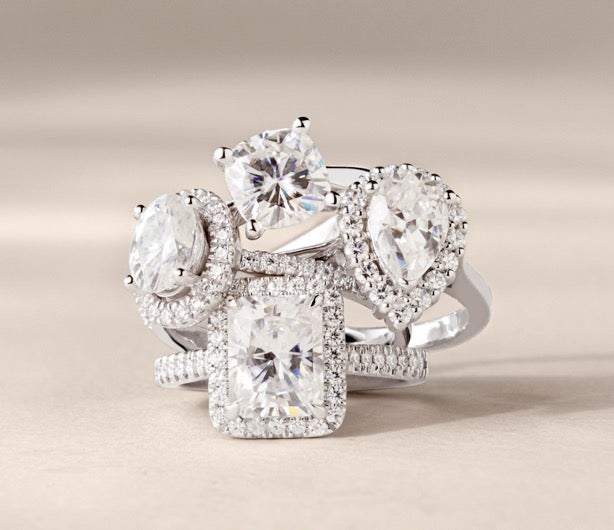All About Moissanite

What is moissanite?
Moissanites, also known as simulant diamonds, look similar to diamonds but have different chemical and physical properties. They are popular stones in engagement rings because of their beautiful, diamond-like sparkle and peachy hues.
Natural moissanite originally comes from space–created by a meteorite that fell to Earth. Moissanite was first discovered in a meteor crater in Arizona in 1893 by a man named Moissan. Moissanite is one of the rarest minerals found in nature because it literally comes from space. In case you were curious, moissanite is scientifically known as silicon carbide.
lab-grown moissanite
Back in the late 90’s, scientists were able to reverse engineer moissanite in a lab for a less expensive gem that looks and sparkles like a diamond. Moissanite was introduced into the market as an alternative for diamonds that’s also sustainable and a conflict-free gemstone.
what’s the difference between moissanite and diamond?
For starters, moissanite is not made of carbon crystals like a diamond is. Moissanite still has the flash and dazzle of diamond-like jewelry.
Because moissanite diamonds are created in a lab, they are typically graded in the D-E-F color range for a gem that sparkles white. Plus, moissanite is nearly as strong as a diamond. On the Mohs Scale Of Hardness, which identifies a gems durability, moissanite is rated as a 9.25. Diamonds, which are the hardest known mineral, score a 10.
It’s truly up to each individual to decide if they’re more interested in moissanite or a diamond. No matter what you decide, both choices are beautiful representations of love.

